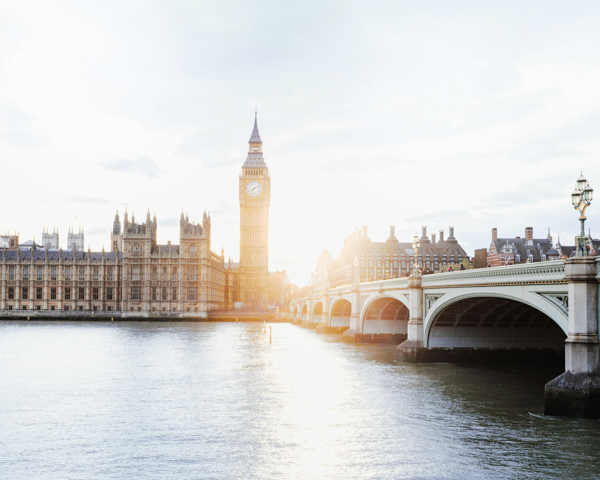It's that time of year again, when we set our clocks forward one hour and enjoy longer evenings filled with sunshine! Meanwhile, most of the regions in the Northern Hemisphere will have just recently switched out of daylight saving time.
But what exactly is Daylight Saving Time (DST), why was it introduced, which countries use it, and how does it affect your travels? Here's all you need to know about DST in Australia, including how it can help you travel in 2025 and beyond.

When Does Daylight Saving Time Start and End?
In Australia, Daylight Saving Time begins at 2:00 am (AEST) on the first Sunday in October and ends at 3:00 am (AEDT) on the first Sunday in April. This means that the clocks move forward one hour in October and backward one hour in April, giving us an extra hour of daylight in the evening.
However, these dates only apply to the states of New South Wales, Victoria, South Australia, and Tasmania, not Queensland or Western Australia, so be sure to check local time differences when travelling between states.
What is Daylight Saving and Why Do We Use It?
First and foremost, we must clarify that it is accurately called “daylight saving time”, not “daylight savings time”.
The main idea is to take advantage of the longer summer days by extending daylight into the evening, reducing the need for artificial lighting.
Nowadays, it’s about enjoying more daylight for outdoor activities and syncing with our natural body clock, known as the circadian rhythm, which is influenced by sunlight.
In Australia, this means you can enjoy stunning coastline drives to late-afternoon waves at Bondi Beach.
A Quick History of Daylight Saving Time
Back in the day, towns would set their watches to an official town clock, hence London’s Big Ben. As fast modes of transportation between different countries were introduced, having a world standard system of keeping time became extremely vital.
Enter Sir Sandford Fleming, a Canadian who proposed the idea of 24 time zones around the world. He suggested that every 15 degrees of longitude would represent one hour apart, bringing a bit of order to worldwide timekeeping.
Then, in the early 20th century, we decided to confuse things again when countries began introducing what would become known as daylight saving time. It was introduced to conserve energy and make the most out of each day’s sunlight hours.
In spring, clocks are pushed forward one hour until autumn, when they are then pushed back one hour. That means an hour of extra sleep in autumn when we switch the clocks and one hour less in the spring.
Today, only about 70 countries use DST, but it continues to affect well over a billion people every year.

The Beginnings of Daylight Saving Time

It is often thought that Benjamin Franklin, one of the United States’ Founding Fathers, with the idea of DST. However, Franklin merely joked that Parisians needed to get out of bed earlier to extend the life of candles.
The idea for DST emerged around 1895, proposed by George Hudson, a British-born New Zealand entomologist. Hudson suggested DST so he could have more daylight hours to hunt bugs after work during the summer months. Originally, he proposed a two-hour shift in time.
A few years later, William Willett, the great-great-grandfather of Chris Martin (lead singer of the British rock band Coldplay), proposed the idea of DST to the English Parliament. Willett proposed making 8-time switches per year in 20-minute increments instead of an hour. Despite support from notable figures such as Winston Churchill and Sir Arthur Conan Doyle, he would die before DST would officially be introduced.
Germany is generally credited as the first nation to fully enact daylight saving time during WWI, around mid-1916, to save fuel and energy. Following Germany’s lead, England and the United States soon followed suit to avoid being at a disadvantage.
Interestingly, some Canadians were the first to change their clocks according to the seasons. Residents in Ontario began doing so in 1905, followed by towns in Saskatchewan and Manitoba, all before Germany’s official adoption of DST.
DST Around the World Today
Today, about 70 countries use Daylight Saving Time in at least some regions within their borders. However, this is considered a minority decision in terms of the world’s population when you consider countries like China, India, and Japan do not observe it.
Equatorial vs. Non-Equatorial Countries
- Near the Equator: Countries close to the equator, where daylight hours are consistent year-round, shy away from DST. Daylight hours are pretty much consistent all year round near the equator, so it doesn’t make much sense to have DST.
- Further from the Equator: Countries further from the equator, which experience significant seasonal changes in daylight hours, are more likely to implement DST.
Northern Hemisphere
- Countries Observing DST: United States, Canada, United Kingdom, and the European Union.
- Exceptions: In the U.S., states like Arizona and Hawaii do not observe DST. Arizona opts out due to its extremely hot temperatures, preferring earlier sunsets for cooler evenings.
Southern Hemisphere
- Countries Observing DST: Brazil, Chile, Australia, Fiji, and New Zealand.
- Non-Observing Regions: Most countries in South and Central America, Africa, and Southeast Asia.
Regional Variations
Even within countries that observe DST, not all regions may follow it. Some states, such as Florida and California, are pushing for DST to be in place year-round.
What is daylight saving in Australia?

Australia first implemented DST back in 1917 during World War I to save energy, but abandoned it shortly after the war. It resurfaced for a few years during World War II before it once again faded away post-war.
In the 1960s, Tasmania would then make a big push for DST as a way to save energy and water. By 1972, other states followed suit, except for Queensland, Western Australia, and the Northern Territory, which still don’t currently observe the time switch.
For the rest of the states that do observe DST, clocks are set forward by 1 hour on the first Sunday in October and turned back on the first Sunday in April each year.
How Does Daylight Saving Time Affect Travel?

Daylight Saving Time impacts flights, trains, schedules, and other travel arrangements, especially if you're travelling between states that observe DST and those that don’t, such as Queensland or Western Australia.
Always double-check departure and arrival times around the start and end of DST to avoid confusion.
Why Daylight Saving Is a Perfect Excuse to Travel?
With longer daylight hours during DST, you’ll have even more time to explore Australia's stunning landscapes, from the iconic Sydney Harbour to the Great Ocean Road.
Imagine going for a late afternoon surf at Manly Beach, followed by a sunset stroll along Shelly Beach. With DST in full swing, you'll have plenty of daylight hours left to soak in every bit of your trip.
Whether you're adjusting to time changes or dealing with travel delays, having travel insurance can save you from potential headaches and expenses. Purchasing travel insurance during this period is crucial to ensure peace of mind and protect your travel plans from unexpected disruptions.
Does Daylight Saving Time Affect My Sleep?
The start of Daylight Saving Time can mean one less hour of sleep, but it’s nothing a good cup of coffee, tea, or matcha can’t fix! After a day or two, most people adjust naturally. The real benefit comes in autumn when clocks go back, and you can catch that extra hour of rest.
If you’re an early bird or a night owl, DST ensures that your activities align with the sunlight, giving you more time to be out and about.
Daylight Saving Around the World
While Australia enjoys the benefits of DST, not all countries do. Places like China, India, and Japan don’t observe Daylight Saving Time at all. In contrast, New Zealand, the U.S., and Europe are big participants.
So, if you’re jet-setting to multiple destinations, be sure to check whether your new time zone follows DST or not. It’s one of those small details that can make a big difference when planning your overseas adventure!
Daylight Saving Dates
| Year | DST Start Date | DST End Date |
|---|---|---|
| 2025 | October 5 | April 6, 2026 |
| 2026 | October 4 | April 5, 2027 |
| 2027 | October 3 | April 4, 2028 |
| 2028 | October 1 | April 2, 2029 |
| 2029 | October 7 | April 1, 2030 |
| 2030 | October 6 | April 7, 2031 |
